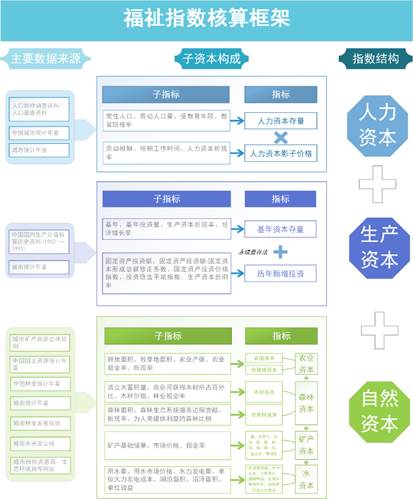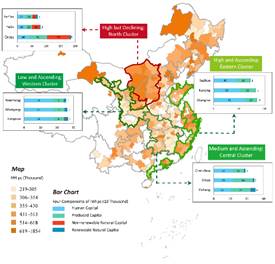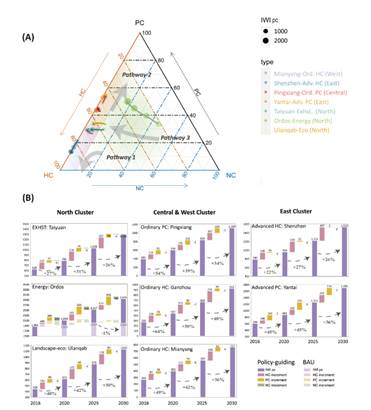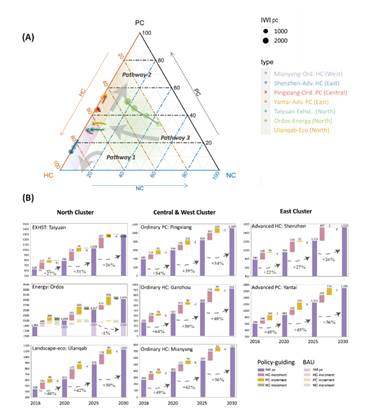It is essential to assess the development of China's regions for achieving sustainable development goals. However, the existing research on sustainable development assessment is still restricted to developed countries and lacks the city-level quantitative indicators and evaluation system suitable for China. The United Nations University - International Human Dimensions Programme on Global Environmental Change (UNU-IHDP) and the United Nations Environment Programme (UNEP) proposed that the Inclusive Wealth Index (IWI) can serve as one of the indicators to measure sustainable development, but it has not been applied at China’s city-level currently. Consequently, Professor Guan Dabo's research group from the Department of Earth System Science (DESS) of Tsinghua University pioneered the application of the Inclusive Wealth Index at the city-level, advancing a set of quantitative indicators and evaluation system of sustainable development at the city level suitable for China's national conditions, and establishing the database of sustainable development on the economic, social and environmental dimensions of Chinese cities (as shown in Figure 1), so as to compensate for the deficiency of the existing evaluation system at the city-level.
Recently, the above research results were published online in Global Environmental Change, hailed as a influential journal in environmental science, with the title of "Inclusive Wealth Index Measuring Sustainable Development Potentials for Chinese Cities" in which the evaluation system of Chinese cities' inclusive wealth index is shaped to provide appropriate development paths and policy guidelines for different cities on sustainable development.

Fig. 1 Evaluation framework of China's city-level inclusive wealth index
Research shows that cities clustered in the eastern parts of China generally enjoy higher levels of IWI per capita. Beijing, Tianjin, Shanghai, Nanjing and Guangzhou rank the top in the IWI per capita, of which high levels of sustainability performance are largely driven by their high quality and quantity of human capital that are characterized by outstanding performance in welfare, income and efficiency. The high-quality human capital in Shenzhen, an eastern city in China, has brought high profits to the local economy. Simultaneously, the economic growth has strengthened the investment in education and scientific research, which further promoted the development of human capital.

Fig. 2. Inclusive wealth in 210 Chinese cities in 2016.
on account that the majority of the western urban agglomerations are part of cities dominated by ordinary human capital with low quality of both human and produced capital, Dingxi, Shaoyang, Nanchong and Neijiang in Western China rank lower in IWI per capita that are plagued by development problems in welfare, income, efficiency, and sustainability performance. Specifically, education attainment in ordinary HC-dominated cities is very poor with an average schooling of 8.76 years on average. At the same time, the backward industrial structure leads to fewer available jobs and lower levels of income, aggravating the problem of low-quality human capital.

Fig. 3. Comparison of Urban Capital Structure and Capital Quality in China in 2016
The research is initiated from the dependence on energy in cities. Taking Ordos, one representative city in northern China, as an example, its IWI per capita is mainly determined by non-renewable resources. On account of the slow growth of human capital and the decline of natural capital, the energy-producing city may witness the decline of IWI per capita in the future. Accordingly, there is needed to stress strong policy support and guidance on improving human and produced capital in energy-producing cities and gradually get rid of the dependence on natural capital.

Fig. 4. The Dynamic Pattern of Capital Structure and IWI Growth for Typical Cities from 2016 to 2030.
Cheng Danyang is considered as the first author of this paper, a doctoral candidate in the Department of Earth System Science of Tsinghua University. Simultaneously, the paper was jointly completed by scholars from many domestic and foreign institutions such as The Administrative Centre for China’s Agenda 21, Ministry of Science and Technology, Shandong University, University of Groningen, and University College London. The research was supported by the National Natural Science Foundation of China.
Article information:
Cheng, Danyang et al. 2022. 'Inclusive wealth index measuring sustainable development potentials for Chinese cities', Global Environmental Change, 72: 102417.
Original link:
https://www.sciencedirect.com/science/article/pii/S0959378021001965?dgcid=author#ce.acknowledgment_qkc_h3f_trb
Prepared by: Cheng Danyang
Edited by: Wang Jiayin
Checked by: Huang Xiaomeng